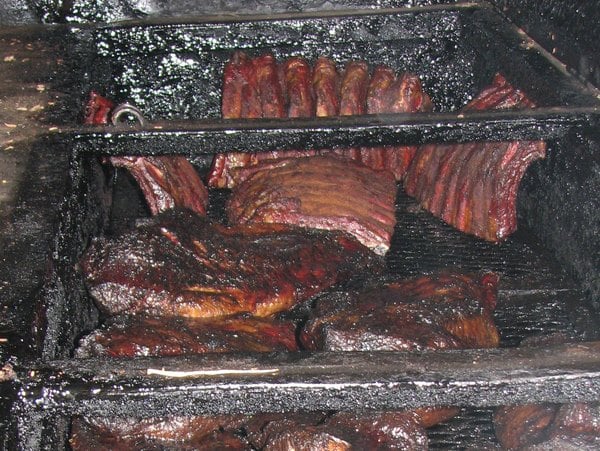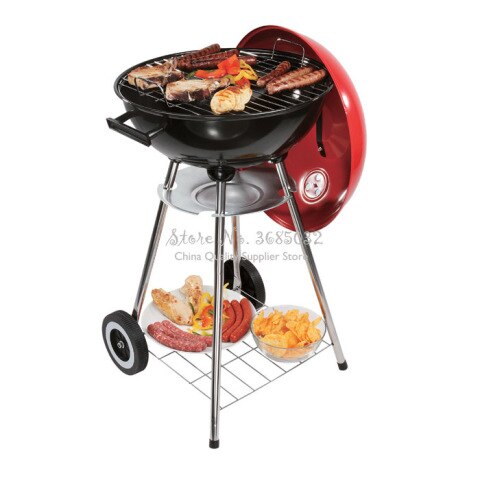
While there is a constant debate over charcoal and gas grills, it is not settled. Both types of grills have their advantages and disadvantages. Both are excellent for grilling and barbecued food preparation, but there are pros and con's to each. Read on to learn more about these two popular grill types, and which is best for you. These are their benefits and drawbacks.
One of the worst things about charcoal is the unpleasant ash it leaves behind. This is especially true for Weber kettles that are cheap. An internal ash collector system, which channels the ash to a collection tray, is an option for grills of better quality. A gas grill can also be connected to a home gas supply, making cleanup easy. Meanwhile, a charcoal grill requires periodic cleaning and replenishing of its fuel.

Charcoal can cause ash. The ash from charcoal grills can get everywhere. The ash from charcoal can be very large and fall on to your clothes. It can also lead to a greater mess. A charcoal grill will require you to clean your cooking grates more often. It is important to take these factors into consideration when you are deciding whether to use a charcoal or a gas grill. You might be amazed at the number of options on the market.
Charcoal grills also produce a lot more smoke than gas ones. Charcoal grills can be lit with little charcoal, so long as you are aware of how much charcoal is needed to cook a steak. However, they're more expensive than gas grills, so you'll want to make sure you're buying a gas grill with a longer cooking time. So which type of grill would be best?
Gas grills can be more costly than charcoal grills but they are still easy to transport and affordable. The gas-powered grill is easier to clean. It is easy to clean and offers a lot of space. A charcoal grill does not have these same features. It's difficult to clean the charcoal, and it's not ideal for small outdoor cooking. A gas-powered barbeque will work better. You can control the temperature and cook as much or little as you like.

A gas-powered barbecue is much easier to transport. Charcoal barbecues can be heavy and difficult for people to transport. It's also difficult to light the charcoal with lighter fluid, but it doesn't burn as hot as a gas-powered one. A gas-powered charcoal grill will produce less ash than one powered by gas. A gas-powered grill is therefore safer. This is what makes gas grills safer than charcoal.
FAQ
Where can I get free online cooking lessons
Many websites provide free cooking lessons. You can search YouTube for videos that teach you how to prepare different meals. You can access thousands of recipes from some websites. The sites typically charge a monthly fee but you can test them for free for a period of 30 days.
Do I need to buy any ingredients to cook?
You don’t always need to buy the ingredients. Many grocery stores have premade sauces and other products that you can substitute for. Premade meals are an option if you're looking for a way to save some money.
How do I learn to cook like a professional?
Cooking is a great way to improve your life. Learning to cook healthy food for yourself and others is a great way to increase self-confidence and develop new skills. Begin cooking at your own home if you are looking to improve your culinary skills. Finding out your favorite recipes is the first step. Then, read books about different foods, such as Italian, Mexican, Chinese, etc. Finally, make sure you practice different recipes until you feel confident.
Do I need any special equipment to cook?
No, you don't need any special equipment to learn to cook. However, having the right tools can make cooking easier. A knife can be used instead of a fork when making pasta, or a whisk could be used to whip up stiff egg whites. The right tools make cooking easier and faster.
How much does a culinary school cost?
The cost of a culinary school depends on where you are, how much you study, and what program or course you choose. The annual tuition average is between $10,000 and $30,000 Students graduate with approximately $20,000 of debt. There are programs that offer work-study and scholarships.
Statistics
- According to the BLS, chefs earn $58,740 a year. (learnhowtobecome.org)
- under 10 Kids have been taught that there is special food just for them, and Fiese says that 10 percent of kids will throw a tantrum if they don't get the food they want. (washingtonpost.com)
- You'll be amazed that over 90% of CIA students receive scholarships and grants to finish their culinary studies. (ischoolconnect.com)
External Links
How To
How to make a perfect eggroll
Omelets have always been a favourite food to eat for breakfast. How can you make them perfectly? I have tried many different recipes and methods, but none of them work. Today, I'd like to share some tips with you in order to make delicious and fluffy omelets every day.
Before we start making omelets, let's remember that eggs are temperamental. Eggs must be purchased fresh, preferably organic, and kept chilled until ready for cooking. If they are not kept cold enough, the whites won’t form properly. The yolks will also break down too quickly and become runny. This makes your omelets look weirdly colored. It is best to use room-temperature eggs if you are going to cook them right away.
You can also separate the egg before you add it to the pan. The yolk and white should not be mixed together as this can cause the omelet's curdle.
The bottom part of an egg that is added directly to the stovetop might be burned, which could cause a ruined texture in your omelet. Instead, place the egg in the microwave for 10 second before you put it in the skillet. The microwave heat cooks your egg just right, without it becoming too soft.
Next, let's talk about mixing the eggs. Mix eggs well together. To do this, grab the bowl of the mixer and turn it upside down. Then shake the bowl vigorously. This way, the air inside the bowl gets whipped around and mixes the egg thoroughly.
Now comes the fun part - pouring the milk into the mixture. The first step is to pour half of the milk in the beaten eggs. Next, fold the eggs into the remaining milk. Do not worry if you see streaks of egg; they will disappear when the omelet is flipped.
After you have done folding the eggs, heat the pan on medium heat. The oil will start to smoke. When the oil is hot enough, add 1/4 cup butter to the pan. Stir it around until the butter covers the entire pan. Open the lid and sprinkle salt on the pan. The salt will help to prevent the omelet's sticking to the pan.
Once the omelet forms, cover the pan again. Let the top side set completely. Flip the omelet by using a spatula. Cook the opposite side for another minute. Take the omelet out of the pan and immediately serve.
This recipe is best made with whole milk. However, it can also be used with skimmed milk.